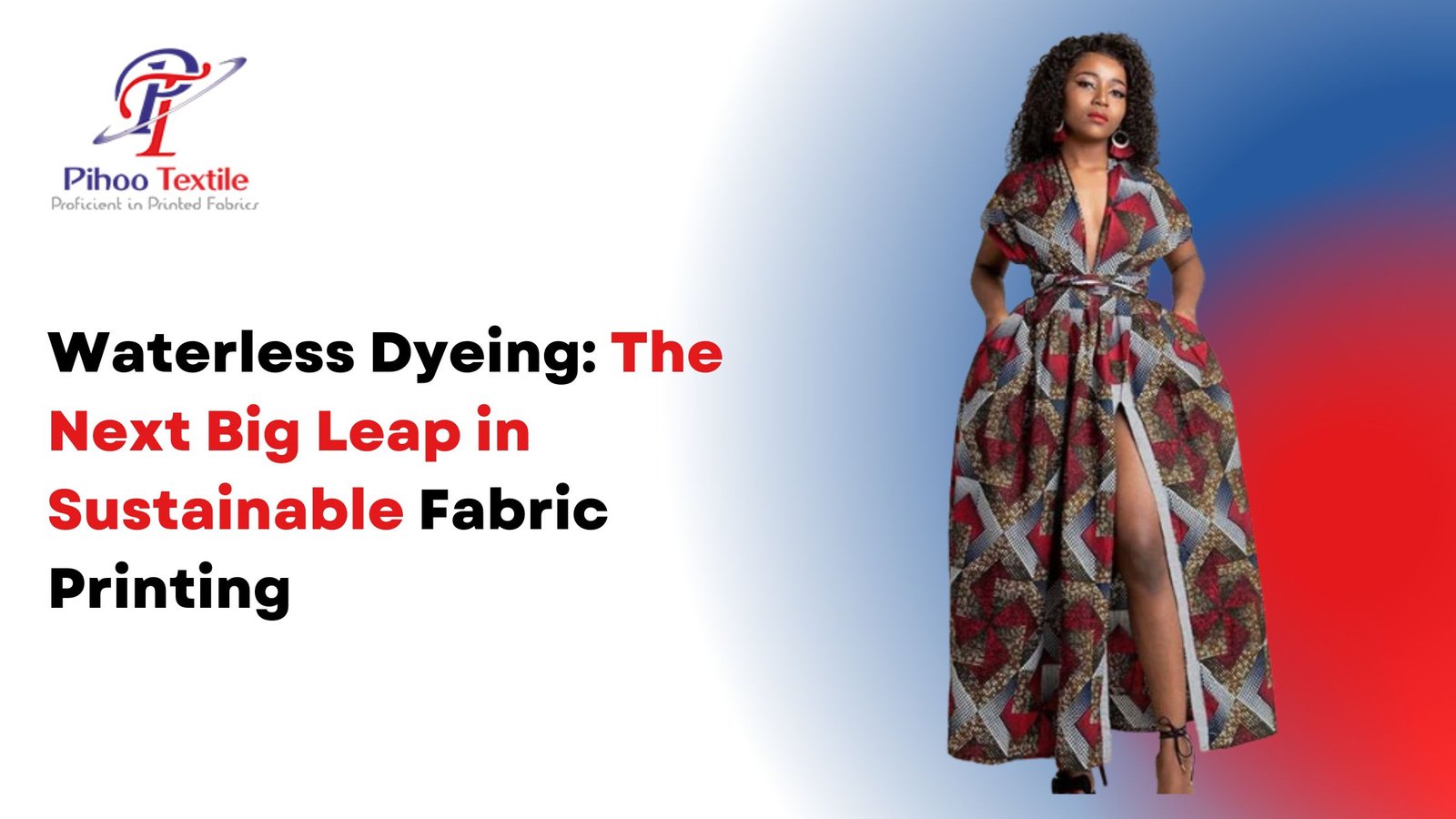Waterless Dyeing: The Next Big Leap in Sustainable Fabric Printing
Imagine a world where rivers no longer run blue or red from textile dye effluent, and communities no longer compete with factories for clean water. This isn’t a distant dream—it’s a necessity. By 2030, global freshwater demand is expected to outstrip supply by 40%. The textile industry, responsible for nearly 20% of industrial water pollution worldwide, is at the epicenter of this crisis. As one Chinese official bluntly put it, “The dyeing industry has made the cloth beautiful but turned the clean water black.” For entrepreneurs entering textiles, the message is clear: the future belongs to those who innovate sustainably. Enter waterless dyeing—a technology that promises to transform fabric printing and help solve one of fashion’s most pressing environmental challenges.
The Problem with Traditional Dyeing: A Resource-Heavy Legacy
Traditional dyeing is a marvel of chemistry, but it’s also a guzzler of resources. To color just one kilogram of fabric, manufacturers use 100–150 liters of water. That’s up to 25 liters for a single cotton T-shirt. Multiply this by the millions of garments produced daily, and the numbers become staggering. In just two years, the textile industry uses enough water to fill the Mediterranean Sea—just for dyeing.
But the environmental toll doesn’t stop at water consumption. The wastewater produced is laced with residual dyes, salts, fixatives, and hazardous chemicals. In many parts of India, China, and Southeast Asia, rivers near dye houses are literally colored by the day’s production. The result? Aquatic life suffers, groundwater is contaminated, and communities are left with toxic water. Even with treatment plants, significant pollution often remains, and the energy and chemical costs add up fast. For textile businesses, this means higher bills, regulatory headaches, and growing consumer backlash against “dirty” fashion.
The Rise of Waterless Dyeing: Innovation Born from Necessity
Necessity, as always, is the mother of invention. The water crisis has forced innovators to reimagine how fabric is colored. In the past decade, waterless dyeing has moved from a lab experiment to a commercial reality. At least three major approaches are making headlines:
Supercritical CO₂ Dyeing (DyeCoo)
Dutch company DyeCoo pioneered the use of supercritical CO₂ as a dyeing medium, launching the world’s first commercial waterless dyeing machine in 2011. Sportswear giants like Nike and Adidas quickly adopted the technology, with Nike branding it “ColorDry.” The results were so promising that Adidas launched entire product lines using DryDye technology. The message was clear: waterless dyeing was ready for the big leagues.
AirDye & Heat Transfer Printing
American innovation brought AirDye, a process using heat and pressure to transfer dye from specially printed paper onto fabric. This method, which works especially well with polyester, boasts 75% less water and 86% less energy use than conventional dyeing. It’s essentially a dry printing process, opening new possibilities for intricate designs and rapid production.
ColorZen for Cotton
Natural fibers like cotton posed a challenge until ColorZen introduced a pre-treatment that makes cotton fibers more receptive to dye. The result? Up to 90% less water, 95% fewer chemicals, and 75% less energy used in the dyeing process. While not entirely waterless, it’s a massive leap forward for the world’s most popular fabric.
How Waterless Dyeing Works: The Science Behind the Revolution
Supercritical CO₂: The Dry Dyeing Marvel
At the heart of DyeCoo’s process is supercritical CO₂—a state where carbon dioxide behaves like both a gas and a liquid. Here’s how it works:
- Pressurization: Fabric is loaded into a sealed vessel, and CO₂ is pressurized above 74 bar at around 31°C, turning it supercritical.
- Dye Infusion: Special disperse dyes dissolve into the supercritical CO₂, which then penetrates deep into the fabric fibers.
- Color Transfer: The dye-laden CO₂ circulates through the fabric, bonding dye molecules to the fibers without water.
- Recovery: The CO₂ is depressurized, reverting to gas and leaving the fabric dry and vividly colored. The gas is then recycled for the next batch.
This method is especially effective for polyester and other synthetics, with research ongoing to adapt it for cotton and wool.
AirDye & ColorZen: Alternative Waterless Approaches
AirDye uses heat to sublimate dye from paper onto fabric, while ColorZen’s pre-treatment chemically alters cotton to absorb dye more efficiently. Both methods drastically reduce water and chemical use, proving that waterless dyeing isn’t limited to one technology.
Environmental Benefits: Why Waterless Dyeing Is a Game-Changer
- Zero Water Consumption: Waterless dyeing slashes water usage from 100–150 liters per kg of fabric to nearly zero. For every ton of fabric dyed, that’s 100,000 liters of water saved.
- No Toxic Effluent: With no water used, there’s no contaminated wastewater to treat or discharge. This means cleaner rivers and healthier communities.
- Fewer Chemicals: DyeCoo’s process eliminates the need for salts and many auxiliary chemicals, while Adidas reports a 50% reduction in chemical use with DryDye.
- Lower Energy and Carbon Footprint: Supercritical CO₂ dyeing operates at lower temperatures and eliminates drying steps, cutting energy use and greenhouse gas emissions by up to 58%.
- Closed-Loop and Circularity: The CO₂ used is recycled in a closed loop, and often sourced from industrial waste, making the process even more sustainable.
Real-World Impact: Early Adopters and Industry Trends
Nike and Adidas have already produced millions of garments using waterless dyeing, setting a precedent for the industry. As one Nike executive put it, “This is a significant step in our journey to serve both the athlete and the planet.” Brands embracing waterless dyeing are not just reducing their environmental impact—they’re also gaining a powerful marketing edge with eco-conscious consumers.
Challenges and the Road Ahead
While waterless dyeing is revolutionary, it’s not without challenges. The technology is currently best suited to synthetics like polyester. Adapting it for natural fibers requires further innovation. The upfront investment in new machinery can be significant, but as adoption grows, costs are expected to fall. For entrepreneurs, the opportunity is clear: those who move early will be best positioned to lead the next wave of sustainable textiles.
Conclusion: The Future of Fabric Printing Is Waterless
Waterless dyeing isn’t just a technological upgrade—it’s a paradigm shift for the textile industry. By eliminating water from the dyeing process, we can protect precious resources, reduce pollution, and create a more sustainable future for fashion. For startups and established manufacturers alike, the message is clear: the next big leap in fabric printing is here, and it’s waterless.
If you need further customization, more technical depth, or want to add case studies and expert quotes, let me know!


